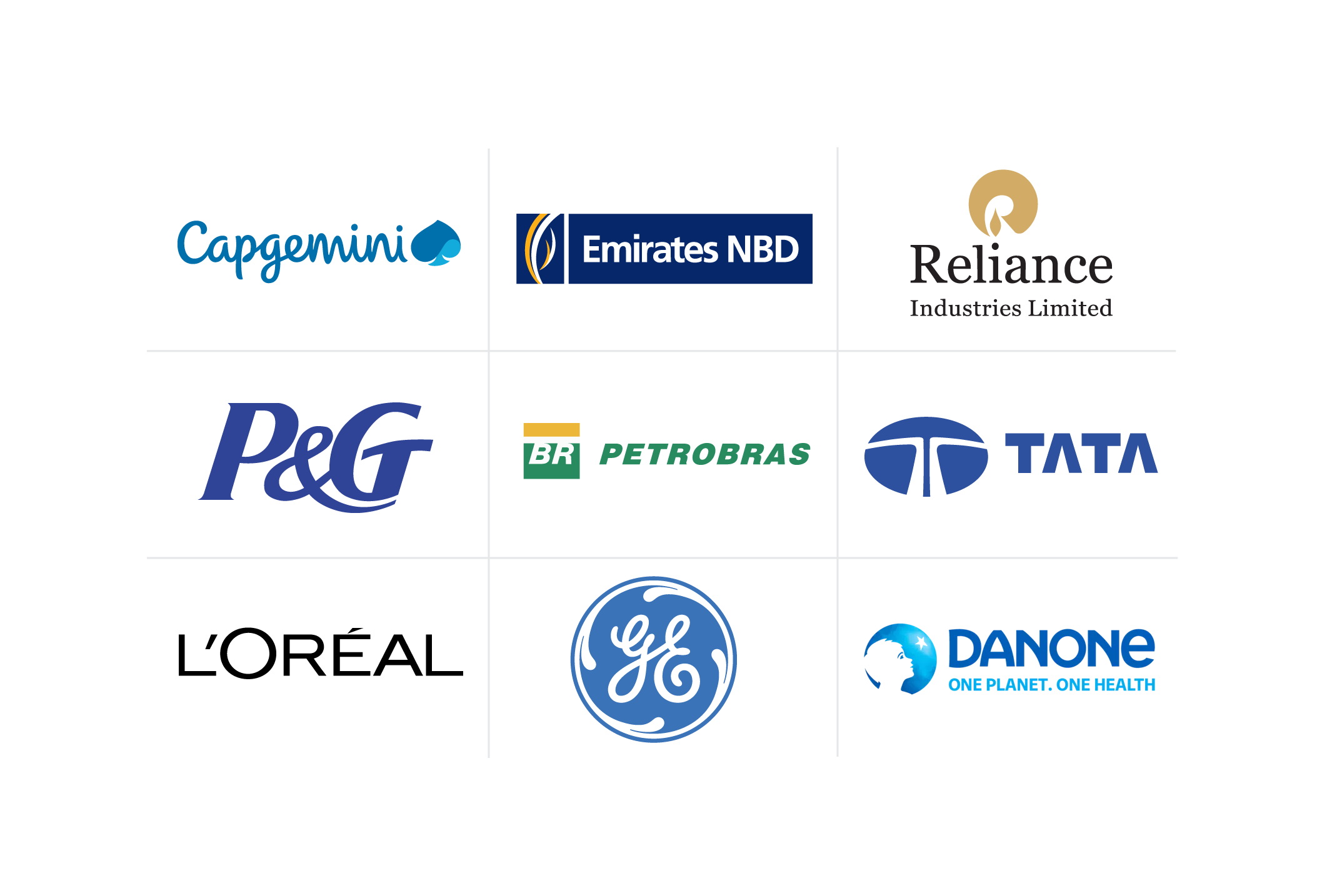Navigating Learning and Development Metrics for Business Success
Learning and development metrics are an important part of ensuring that your L&D plan is working. Explore learning and development metrics, how to measure employee learning and development, and learning and development metrics examples.
![[Featured Image] A businesswoman stands next to a large chart of graphs to give a presentation to executives on the learning and development metrics within their company.](https://d3njjcbhbojbot.cloudfront.net/api/utilities/v1/imageproxy/https://images.ctfassets.net/2pudprfttvy6/42cjnEfvP6tK3Y6Jaob8JY/a3530ff87d5cfedc18d8d5b499fb5003/GettyImages-1441650535.jpg?w=1500&h=680&q=60&fit=fill&f=faces&fm=jpg&fl=progressive&auto=format%2Ccompress&dpr=1&w=1000)
A strong learning and development (L&D) program helps support your employees with opportunities to upskill, reskill, and advance in their roles through talent development. Learning and development programs influence business growth and employee satisfaction when implemented effectively.
To ensure your employees are gaining the highest value from your L&D program, it’s smart to establish learning and development metrics to track their progress and results. Metrics are also helpful in demonstrating value to executives and other professionals responsible for making funding decisions [1].
Read on to learn more about learning and development metrics and how you can measure employee learning and development to enhance the success of your company or organization.
What are learning and development metrics?
Learning and development metrics are a key component of a successful learning and development program because they help track results and demonstrate how the program supports a business in achieving its goals. Metrics are a variety of quantifiable measures that help track progress or performance. Choosing the right metrics allows you to answer meaningful questions, such as whether or not your employees are successfully developing new skills needed to meet your team and company goals.
The role of metrics in corporate learning
Metrics in corporate learning often play a role in C-suite and executive decision-making. Leadership often wants quantifiable results that are easily demonstrated and applicable to strategic planning. In addition, metrics are key for ensuring that learning and development programs are effective since they help participants at all levels see how employees receive the materials and how business goals are advancing due to the L&D programs.
Types of learning and development metrics
Each learning and development metric serves a specific purpose, and it’s important to select the right ones to measure based on your business’s goals and objectives. Some quantitative and qualitative metrics to track include [1]:
Completion rates
Content views
License activation
Participation rate
Employee satisfaction
Retention rates of new knowledge or skills
Employee retention
Internal mobility rate
Establishing clear learning objectives and KPIs
Establishing clear learning objectives and key performance indicators (KPIs) helps you achieve two main goals for a learning and development program:
Helping employees successfully develop key skills that contribute to business growth
Using the resulting data to demonstrate to stakeholders the effectiveness of an L&D program in increasing business revenue
Consider both objectives in more detail next.
Defining clear learning objectives
Determining clear learning objectives is important because it helps ensure that the time and money spent on particular L&D programs are actually advancing business growth toward your organization's goals. When learning and development support business objectives, it increases the value to both C-suite executives and the employees undertaking the training.
To achieve this, professionals at all levels should be involved to ensure everyone has input, which then translates to buy-in. Use their feedback and expertise to create actionable, measurable, realistic strategies for your business’s unique goals.
Identifying key performance indicators for learning
Key performance indicators are a quantitative measurement that evaluates performance against expected results, which helps to demonstrate how successful a learning and development program is. KPIs are objective, providing concrete results easily measured against hoped-for outcomes. This allows for efficient demonstration of a program’s value.
A KPI might have a target number or a range you’re looking for. Whatever your goal, make sure you choose relevant KPIs that help track how successfully your L&D program meets its objectives. For example, appropriately skilled employees typically perform better at their jobs, contributing to a company's success. When instituting an L&D program, you can use the KPI of skill proficiency to measure its effectiveness. Employees who can demonstrate skill proficiency by performing specific tasks have achieved this KPI [2].
Measuring employee engagement and satisfaction
An effective learning and development program can benefit employees in ways related to job satisfaction and engagement. These benefits can include:
Being happier at work and feeling more fulfilled and confident
Being more engaged in training and their roles due to an increased perception of value
Becoming more engaged with coworkers can lead to higher productivity
Staying longer in their roles instead of seeking out new employment
You can measure these indicators through employee engagement metrics and employee satisfaction surveys [3].
Employee engagement metrics
Employee engagement metrics help demonstrate what employees gain from participating in a learning and development program. These metrics include improved employee performance reviews, participation rates, and colleague interactions.
Keeping an open dialogue with employees about their experiences and tracking participation and engagement rates work together to ensure the programs are effective and hold value for employees. Engaged employees tend to be more productive, which helps to increase ROI [1].
Employee satisfaction surveys
Employee satisfaction surveys help to assess the perceived usefulness and quality of learning and development programs. They offer questions that employees answer after participating in a training. Satisfaction surveys help trainers see the effectiveness of their training while also collecting feedback that allows trainers to adapt their programs as needed for future engagement.

Analyzing skill acquisition and application
Analyzing your employees' level of skill acquisition and how they apply their new skills is a key L&D metric. They can help demonstrate ROI because of their effectiveness in explaining how each skill learned contributes to your business’s growth and bottom line.
Skill acquisition metrics
Measuring the application of new skills within the workplace helps trainers and C-suite executives understand how much employees retain from training and what they find valuable. Typically, the more skills being applied point to evidence that the trainings provide relevant and valuable knowledge.
Assessing skill acquisition in the workplace
One way to assess skill acquisition in the workplace is to identify skill gaps and then measure where the new skills learned in training fill those gaps. Learning analytics are also helpful for providing insight into how effectively skills are being acquired and applied and if any roadblocks are stopping complete acquisition.
Overcoming challenges and improving learning metrics
Overcoming challenges that may occur while trying to collect learning data helps to improve learning metrics overall. You can do this by deliberately applying specific processes to ensure robust, complex data gathering and insight.
Common challenges in measuring learning
A common challenge in measuring learning is proving that learning and development training is worth the expense. Robust metrics and data help prove ROI and frame L&D as an investment in your business’s future.
Another challenge is that while it’s tempting to rely on easily gathered quantitative data points, such as participation rates and employee retention, it’s also essential to take the time to gather more qualitative data. This data isn’t as concrete, but it does help prove value in areas such as employee satisfaction or perceived value [1].
Leveraging technology for better measurement
Technology helps trainers and business executives track, monitor, and analyze learning and development metrics more easily. Online learning tools and learning management systems make L&D programs more accessible, flexible, and employee-centered [3]. These systems provide robust analytical capabilities and seamless data collection for a more value-driven training framework.
Getting started with Coursera
Learning and development metrics are key to a successful L&D program because they offer insight into training effectiveness, value, and ROI. With Coursera for Business, you can train teams across your organization in the skills that matter most in today’s digital economy. Your employees will gain access to content from 350+ leading universities and industry partners, where they can build real-world experience with innovative skills, tools, and technologies while earning globally recognized credentials.
Our customizable, scalable learning solutions balance workplace skills and technical skills training in diverse formats, from video clips to guided projects and Professional Certificates. Accelerate your digital transformation and equip employees to drive growth with Coursera.
Article sources
1. LinkedIn. "8 Learning & Development Metrics That Your CEO Will Care About, https://www.linkedin.com/business/talent/blog/learning-and-development/learning-development-metrics-your-ceo-will-care-about#:~:text=L%26D%20teams%20have,when%20resources%20get%20tight." Accessed May 28, 2025.
2. Change Management Insights. "10 Examples of KPIs for Learning and Development, https://changemanagementinsight.com/examples-of-kpis-for-learning-and-development/#:~:text=This%20KPI%20evaluates,performance%20and%20productivity." Accessed May 28, 2025.
3. University of Phoenix. "10 ways learning and development can save your company, https://www.phoenix.edu/blog/learning-and-development-importance.html#:~:text=Learning%20and%20development%20programs%20typically,out%20for%20information%20or%20resources." Accessed May 28, 2025.
This content has been made available for informational purposes only. Learners are advised to conduct additional research to ensure that courses and other credentials pursued meet their personal, professional, and financial goals.

